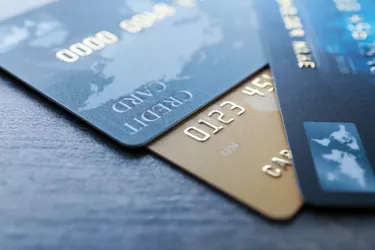Debit card fraud is still on the rise, according to the Fair Isaac Corporation (FICO). In 2017, identity theft due to ATM fraud alone rose over the previous year's statistics to the tune of a 10 percent increase in the number of cards that were compromised and an 8 percent increase in the number of card readers compromised. But this increase is actually a marked improvement over the previous two years. In 2015, card fraud spiked an alarming 500 percent over the previous year. In 2016, the numbers came down to 70 percent. Compared to these statistics, the 10 percent increase in 2017 is quite an improvement. But there's still a potential fraud risk every time you swipe or insert your debit card in a card reader or pay for something online.

Video of the Day
What is Debit Card Fraud?
Debit card fraud is any unauthorized use of your debit card, which results in purchases of goods or services or cash withdrawals from your account. A criminal may have physical possession of your card to steal your funds, or she may steal your debit card number and its encrypted data from sources such as an unsecured website or a point-of-sale merchant terminal. Some identity thieves use an external or internal device known as a "skimmer" that they attach to gas pumps, ATMs or merchant terminals. Skimmers steal data from the magnetic stripe on your debit card when you swipe your card to make a purchase or a withdrawal from your account. Other identity thieves use a device known as a "shimmer," which they install inside a card reader. Shimmers are able to read the encrypted data from chip-embedded cards.
Video of the Day
How to File a Debit Card Fraud Claim
The Federal Trade Commission (FTC) advises you to report debit card fraud immediately, as soon as you notice an unauthorized purchase or withdrawal from your account. By acting quickly, you may be able to reduce your liability for unauthorized transactions and minimize your loss. If someone steals your card, or if you lose it, call your card issuer as soon as possible. Even if the theft or loss occurs on a weekend or banking holiday, your card issuer may have a toll-free number you can call to report the missing card and any unauthorized transactions that were made.
You may still have your debit card when you notice unauthorized transactions in your online account or on your checking account statement. Contact your card issuer immediately to file a fraud report for identity theft. The FTC also recommends writing a follow-up letter to confirm your report, keeping a copy of the letter and sending the original by certified mail with a return receipt requested. You can find a sample copy of a letter to dispute unauthorized card transactions by visiting IdentityTheft.gov, scrolling to the bottom of the page and clicking "Sample Letters," and then clicking "Dispute ATM/Debit Card Transactions." If your card issuer does not resolve the problem, you can visit FTC.gov, click "report identity theft" and follow the prompts to file your debit-card fraud claim.
Debit Card Fraud Laws
The Electronic Fund Transfer Act (EFTA) protects consumers against debit card theft. If you report that your card is missing before any unauthorized transactions occur, you have zero liability should a transaction occur afterward. If someone illegally uses your card before you have a chance to report it, your liability depends on the window of time that lapses between your report and any unauthorized uses. If you file your report within two days after you discover unauthorized transactions, the cap on your loss is $50; however, your card issuer may not hold you liable for this amount. If you file your report more than two days and less than 60 days from when your bank statement is issued, your liability jumps to $500 as a maximum loss. But if you file your report more than 60 days after you receive your statement, you may lose all the money that was stolen from you.
Debit Card Fraud Prevention
You can take a proactive stance to protect yourself from debit-card fraud by using a multi-pronged strategy. Monitor your account by frequently checking your online banking activity as well as reviewing your monthly statement. If you're using your debit card at a gas pump, look at all the pumps to make sure the card reader you're using doesn't look different from the other ones or doesn't show signs of tampering. Even better, only use your debit card at a gas pump that has security seals over the cabinet panel. When you use a card reader, wiggle it. If you can move it, don't use it. If you're paying for goods or services online, make sure the payment website uses security encryption software. And if you're paying for something over the phone with your debit card, give your card number only if you initiated the call.